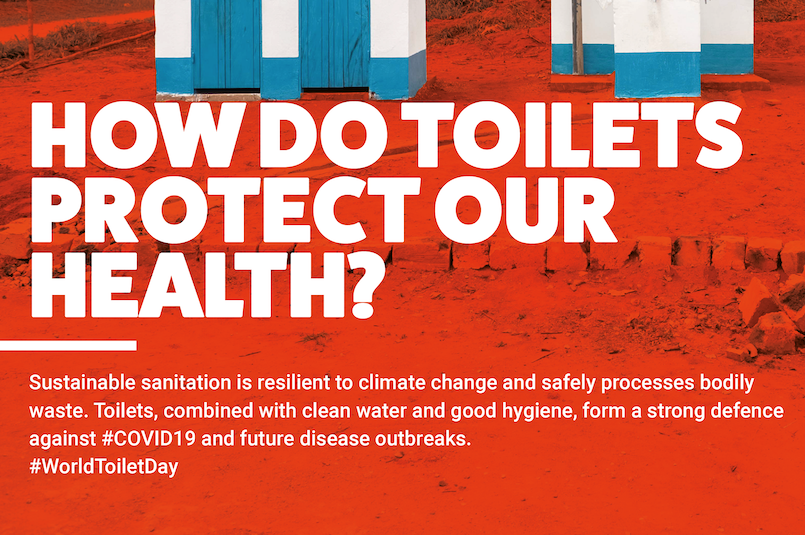November 19 is celebrated as World Toilet Day. The theme for 2020 is Sustainable sanitation and climate change.
World Toilet Day celebrates toilets and raises awareness of the 4.2 billion people living without access to safely managed sanitation. It is about taking action to tackle the global sanitation crisis and achieve Sustainable Development Goal – water and sanitation for all by 2030.
World Toilet Day has been an annual United Nations Observance since 2013. It was first established in 2001 by the World Toilet Organization.
What is World Toilet Day 2020 about?
The theme of World Toilet Day 2020 is sustainable sanitation and climate change.
A well-functioning toilet is connected to a sanitation system that takes away and deals with human waste. These systems need to work 24 hours a day, every day, to keep us and our living environments safe and clean.
Today, the world’s toilets – and the sanitation systems they are connected to – are under threat from climate change. Flooding, drought and rising sea levels can damage any part of a sanitation system – toilets, pipes, tanks and treatment plants – spreading raw sewage and creating a public health emergency.
The effects of climate change are only becoming more frequent and more extreme. We must make our sanitation systems resilient, so they are sustainable as climate change gets worse. Billions of people live with weak and vulnerable sanitation systems, or no systems at all. Climate change will disrupt or destroy sanitation services for huge numbers of people if we do not act.
Everyone must have sustainable sanitation, alongside clean water and handwashing facilities, to help protect and maintain our health security and stop the spread of deadly infectious diseases such as COVID-19, cholera and typhoid.
What does a sustainable sanitation system look like?
Sustainable sanitation begins with a toilet that effectively captures human waste in a safe, accessible and dignified setting. The waste then gets stored in a tank, which can be emptied later by a collection service, or transported away by pipework.
The next stage is treatment and safe disposal. Safe reuse of human waste helps save water, reduces and captures greenhouse gas emissions for energy production, and can provide agriculture with a reliable source of water and nutrients.
Top facts
- Over half of the global population or 4.2 billion people lack safe sanitation.
- 2 in 5 schools around the world lacked basic handwashing facilities prior to the COVID-19 pandemic.
- 40% – or three billion people – of the global population live without basic handwashing facilities with soap and water available at home.
- Around 297,000 children under five – more than 800 every day – die annually from diarrhoeal diseases due to poor hygiene, poor sanitation or unsafe drinking water.
- Globally, 80% of the wastewater generated by society flows back into the ecosystem without being treated or reused.
- Hygiene promotion is the most cost-effective health intervention.
- Climate-resilient water supply and sanitation could save the lives of more than 360,000 infants every year.
- By 2050, up to 5.7 billion people could be living in areas where water is scarce for at least one month a year, creating unprecedented competition for water.
- By 2050, the number of people at risk of floods will increase from its current level of 1.2 billion to 1.6 billion.
- If we limit global warming to 1.5°C above pre-industrial levels, compared to 2°C, we could cut climate-induced water stress by up to 50%.
- Extreme weather – expected to increase in frequency and intensity because of climate change – has caused more than 90% of major disasters over the last decade.
Source: worldtoiletday.info

